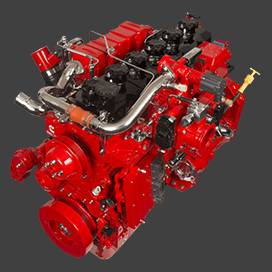Jul . 27, 2024 03:23 Back to list
Troubleshooting Reasons Why Brake Drum Is Incompatible with Brake Shoes During Installation
Why Your Brake Drum Won't Fit Over the Shoes Common Issues and Solutions
When it comes to maintaining your vehicle, the brake system is one of the most critical components. A well-functioning brake system ensures safety on the road, allowing for effective stopping power. One common issue that vehicle owners might face is finding that the brake drum won't fit over the brake shoes during a repair or replacement. This problem can be frustrating, but understanding the underlying causes and potential solutions can help you get back on the road safely.
Understanding the Brake System
Your vehicle's brake system typically consists of brake pads (for disc brakes) or brake shoes (for drum brakes) and the associated hardware, including the brake drum. The brake shoes expand against the inside surface of the drum when you press the brake pedal, creating friction that slows down or stops the vehicle. If the drum doesn’t fit over the shoes, you will be unable to reassemble the brake system correctly, potentially leading to a dangerous situation.
Common Reasons for a Poor Fit
1. Brake Shoe Adjustment One of the most common reasons the brake drum cannot fit is that the brake shoes are not adjusted correctly. The shoes need to be positioned so that they are close enough to the drum for effective braking but not so tight that they prevent the drum from fitting over them. If you recently replaced the shoes or performed maintenance, the adjustment may be off.
2. Worn Components Over time, brake shoes and drums can wear down. If the shoes are too thick or the drum is excessively worn, this can create a situation where the drum doesn’t fit. Worn parts should be replaced to restore the brake's functionality and ensure proper fitting.
3. Incorrect Parts Always ensure that the brake shoes and drums are the correct size and model for your vehicle. If the parts are mismatched, they won’t fit together correctly. Using OEM (Original Equipment Manufacturer) parts can reduce the likelihood of compatibility issues.
4. Mechanical Debris Dirt, rust, or debris can accumulate within the brake assembly, preventing the drum from fitting. Cleaning out the assembly and ensuring all surfaces are free of contamination can often resolve this issue.
brake drum won't fit over shoes

5. Spring Issues The hardware that holds the brake shoes in place, including springs and retainers, may also cause fitment issues. If these components are old or damaged, they might not hold the shoes in the proper position, causing them to spread out too far.
Solutions to the Problem
1. Adjust the Brake Shoes Use the adjuster mechanism (often located at the bottom of the brake assembly) to bring the shoes closer to the drum. Ensure that you make gradual adjustments and frequently check the fit.
2. Inspect and Replace Worn Parts If you notice excessive wear on either the brake shoes or the drum, it's best to replace them. This will not only solve the fitting issue but also enhance braking performance.
3. Verify Part Compatibility Double-check that the parts you’re using are suitable for your vehicle's make and model. If you need to, consult the vehicle's manual or a parts specialist for guidance.
4. Clean the Brake Assembly Remove any dirt or rust from the brake assembly to ensure a clean fitting surface. This can involve using a wire brush or brake cleaner.
5. Check Hardware Inspect the springs and retaining hardware. If you find any components damaged or worn, replace them to ensure they provide the necessary pressure on the brake shoes.
In conclusion, if you find that your brake drum won't fit over the brake shoes, don't panic. By understanding the common issues and following appropriate solutions, you can effectively troubleshoot and resolve the problem. Remember, a properly functioning brake system is essential for your safety and the safety of others on the road. If in doubt, consulting a professional mechanic is always a wise choice.
-
ROR Web Development: Build Fast, Scalable, Secure Apps
NewsAug.17,2025
-
Scania Brake Drums: OEM Quality for Optimal Safety & Durability
NewsAug.16,2025
-
R.V.I: Advanced Remote Visual Inspection for Precision
NewsAug.15,2025
-
Discover HYUNDA: Innovative Vehicles, Equipment & Solutions
NewsAug.14,2025
-
R.V.I: Unlock Advanced Insights & Real-time Performance
NewsAug.13,2025
-
Kamaz Brake Drum: Durable & Reliable for Heavy Duty Trucks
NewsAug.12,2025
